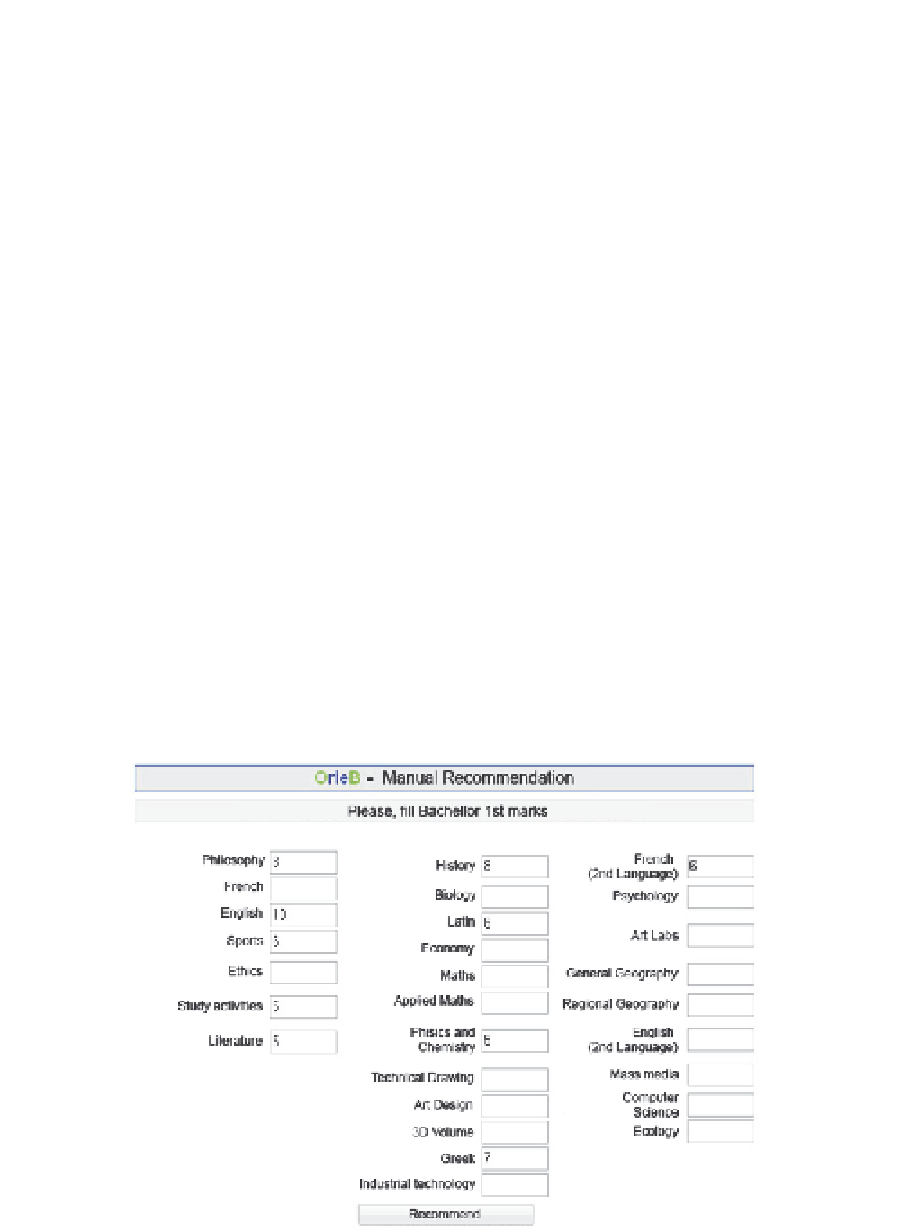Information Technology Reference
In-Depth Information
scf
be the similarity computed by means of CF,
scb
the similarity computed by means of
CB, and
t
trust computed for CF recommendation. New utility function for this subject
will be computed as follows:
1
'
u
c s
,
scf
*
t
scb
*
(4)
t
If CF selects a subject not included by CB, it also will be used to perform the final
recommendation because CF can offer serendipitous recommendations.
From previous procedure system will obtain a list with at the maximum 30 subjects in the
case that CB recommends subjects that CF don't and vice versa. With this list system only
has to order by similarity and recommend the same as done in the old OrieB. This way we
have built a hybrid system by weighting and mixing results from separated CRS and CBRS.
6.2 Hybrid-OrieB
Once presented how system works internally in this section we will show what kind of
recommendations and information OrieB offers and how to obtain it.
6.2.1 Interface
When advisors want to use OrieB to support a student, they just need to type the student ID
(a unique number for each student which identifies him or her from others) or introduce the
student's marks in the last year. The latter choice (Figure 4) offers the possibility of entering
several marks instead of using all of them in order to obtain a more general orientation. But
if not all marks are filled, the approximation of student's development level of competences
can be not as accurate as desired. This way so the more marks filled the more accurate and
customized will be the advices obtained by the system.
Fig. 4. Manual filling of marks

Search WWH ::

Custom Search